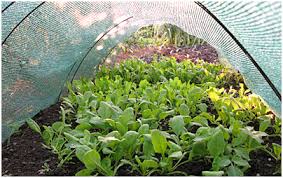
"Shadenets vs. Open Land: Yield Differences"
Share
Introduction
Shade net farming and open farming both have their own set of advantages and disadvantages when it comes to yield attributes.
Here’s a breakdown of some key yield attributes to consider:
Light
Shade net farming: Shade nets regulate the amount of sunlight reaching the crops. This can be beneficial for crops that are sensitive to intense sunlight, such as lettuce, spinach, and strawberries. However, too much shade can also reduce yields.
Open farming: Crops receive full sunlight exposure. This is ideal for crops that require a lot of sun for photosynthesis, such as corn, tomatoes, and peppers.
Temperature
Shade net farming: Shade nets can help to create a cooler microclimate around the plants, which can be beneficial for crops that are sensitive to heat stress.
Open farming: Crops are exposed to ambient air temperatures, which can be both beneficial and detrimental depending on the crop and the climate.

Water Use
Shade net farming: Shade nets can help to reduce water evaporation from the soil, which can be beneficial in areas with limited water resources.
Open farming: Crops exposed to full sun will typically require more water due toincreased evaporation.
Pest and Disease
Shade net netting: Shade nets can provide some protection from pests and diseases, but they are not fool proof.
Open farming: Crops are more exposed to pests and diseases in open fields.
Overall Yield
Shade net farming: Shade nets can improve yields for crops that are sensitive to heat stress, intense sunlight, or water scarcity. However, shade nets can also reduce yields for crops that require a lot of sun.
Open farming: Open farming can produce higher yields for crops that thrive in full sun, but yields may be lower for heat-sensitive crops or in areas with limited water resources.

Summary
The ideal approach for yield will depend on the specific crop, climate, and other factors. In some cases, a combination of shade net farming and open farming may be the best solution. For example, shade nets could be used to protect young plants from intense sunlight during the hottest part of the day, and then removed later in the season to allow the plants to receive more sun.
